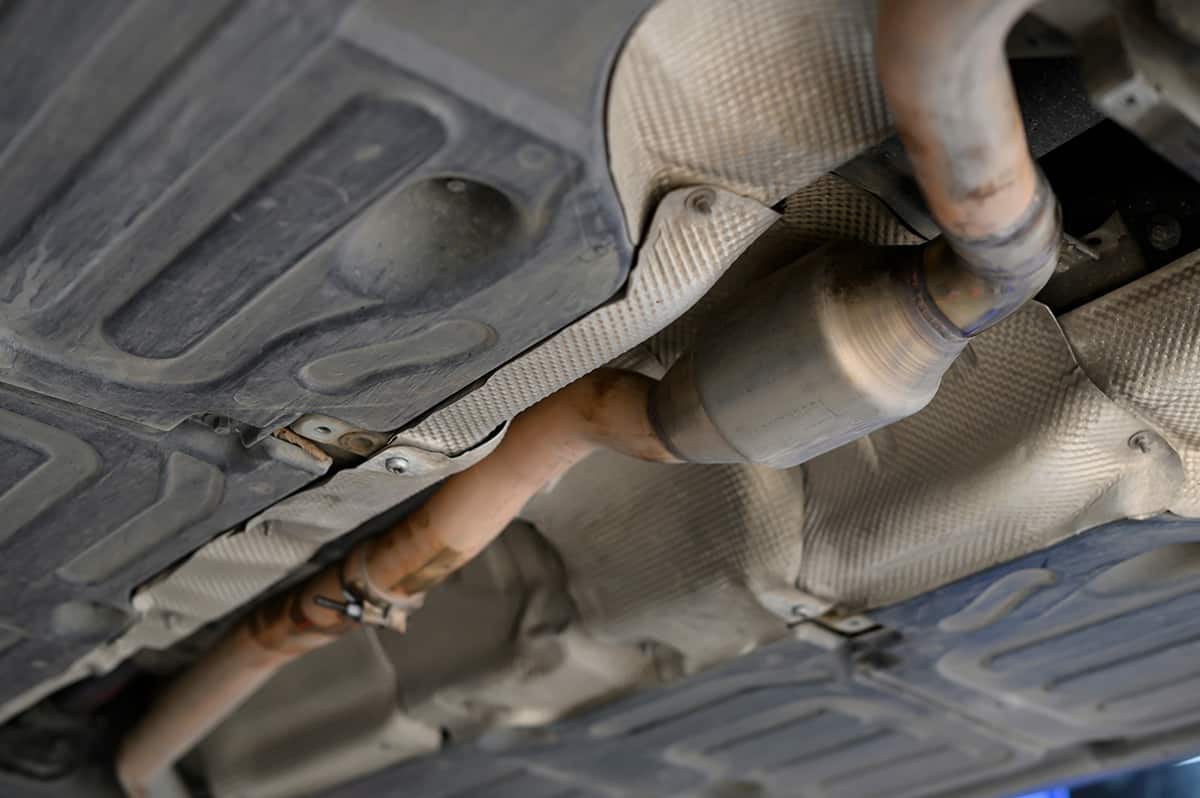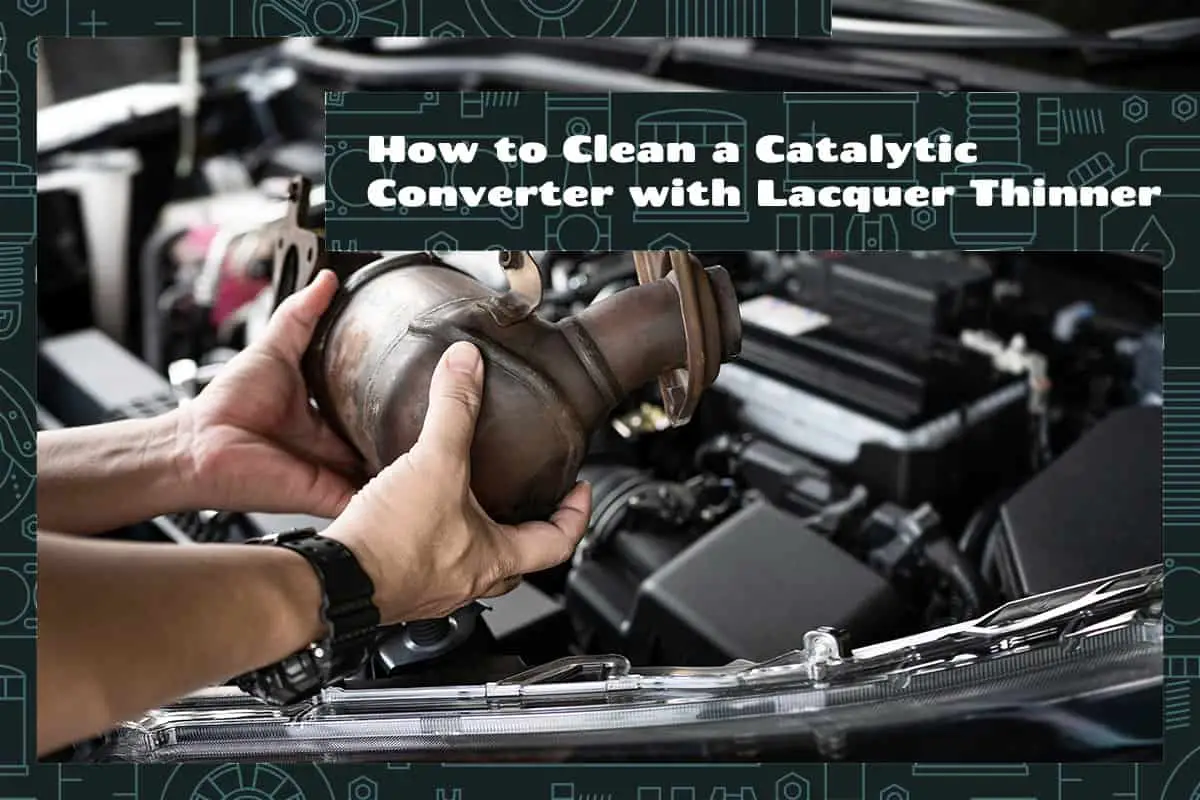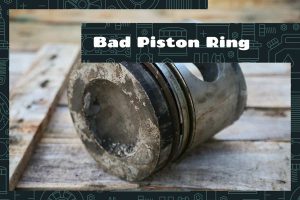The catalytic converter helps in reducing harmful emissions from your car. Eventually, it can get clogged with carbon deposits, impacting the performance and efficiency of your vehicle. A common DIY method to restore its function involves cleaning it with a lacquer thinner.
The steps for cleaning a catalytic converter with lacquer thinner include:
- Drain your car’s gas tank to nearly empty
- Prepare a 1:10 lacquer thinner and gas solution and pour it into your car’s gas tank
- Drive your vehicle for around 50 miles with as few stops as possible
- When nearly out of gas, refill the tank with fresh fuel.
This article will guide you through each of these steps in detail, discuss the advantages and disadvantages of using lacquer thinner, and provide additional information about alternative cleaning methods and aftercare.
What is a Catalytic Converter, and How Does it Work?

A catalytic converter is an integral part of your vehicle’s exhaust system designed to reduce harmful emissions. It employs chemical reactions to convert toxic substances from your car’s combustion process into less harmful ones before they exit your exhaust.
The science behind catalytic converters lies in its internal structure. It consists of a honeycomb-like core coated with catalysts (like platinum, rhodium, and palladium). As the exhaust gasses pass through, three major reactions occur:
- Reduction of Nitrogen Oxides: These harmful gasses are split into nitrogen and oxygen, reducing their toxic effects.
- Oxidation of Carbon Monoxide: A dangerous gas, carbon monoxide, is converted into carbon dioxide.
- Oxidation of Unburnt Hydrocarbons: Any remaining unburnt fuel particles are transformed into water vapor and carbon dioxide.
Why Use Lacquer Thinner to Clean Your Catalytic Converter?
Over time, catalytic converters can become clogged or dirty, leading to reduced performance and efficiency. While there are many products and techniques available for cleaning a catalytic converter, one method that’s frequently discussed in the automotive world is using lacquer thinner. But why use lacquer thinner?
Understanding Lacquer Thinner
Lacquer thinner is a solvent mixture that can dissolve paints, resins, and other finishes. Its cleaning properties are not exclusive to these applications, though. The lacquer thinner has a unique ability to cut through grime and carbon deposits, the main culprit behind a clogged catalytic converter. This makes it a potentially effective tool for cleaning catalytic converters.
One of the major reasons why lacquer thinner is recommended for cleaning catalytic converters is its powerful dissolving capacity. The main function of the catalytic converter is to convert harmful gasses into less harmful ones, a process that leaves carbon deposits over time. These deposits can cause clogging or reduced functionality of the converter. Lacquer thinner, with its potent dissolving properties, can break down these carbon deposits, clearing the way for better, more efficient catalytic function.
Safety and Effectiveness of Lacquer Thinner
While potent, lacquer thinner is generally safe to use for this application. It doesn’t damage the internal components of the catalytic converter. However, care must be taken not to let it come in contact with rubber or plastic parts as it could cause them to degrade.
The effectiveness of lacquer thinner in cleaning catalytic converters is anecdotal, and results may vary. Some vehicle owners have seen significant improvement in performance and emissions after cleaning with lacquer thinner, while others have seen less dramatic results.
As with any other DIY automotive solution, using lacquer thinner to clean your catalytic converter comes with its own set of advantages and disadvantages. On the plus side, it’s cost-effective, easily available, and potentially effective in restoring some of the converter’s functionality. On the downside, it can be potentially hazardous if not handled properly, and the results are not guaranteed.
Preparing to Clean Your Catalytic Converter
Cleaning your catalytic converter is a valuable maintenance task that can enhance your vehicle’s performance and reduce harmful emissions. However, the process requires careful preparation.
Gathering Your Supplies
You’ll need a can of lacquer thinner, a fuel can, and protective gear, including gloves and safety glasses. Ensure to use a good-quality lacquer thinner, preferably one that’s automotive-grade. Also, keep a bucket and some old rags or towels handy for any spills.
Ensuring Safety
Working with lacquer thinner involves dealing with highly volatile and potentially harmful chemicals, so it’s essential to ensure your safety. Always work in a well-ventilated area, away from open flames or sparks, as lacquer thinner is highly flammable. Use protective gloves and eyewear to protect your skin and eyes from accidental spills or splashes.
Draining the Gas Tank
Before introducing the lacquer thinner into your vehicle, you will need to drain as much gasoline from your vehicle’s gas tank as possible.
This is because the lacquer thinner needs to mix with a small amount of gasoline for the cleaning process to be effective. You can do this by running your vehicle until the fuel is almost empty. Ensure your gas gauge is nearing empty before proceeding to the next step.
Step-by-Step Guide to Cleaning a Catalytic Converter with Lacquer Thinner

This section provides a step-by-step guide to cleaning a catalytic converter using lacquer thinner, a potent solvent widely used in the automotive world.
1. Preparing the Solution
With your vehicle’s gas tank almost empty, prepare a mixture of lacquer thinner and gasoline. Typically, you will mix one part lacquer thinner to ten parts gasoline. This mixture ensures the lacquer thinner effectively penetrates the catalytic converter without causing damage. Mix the solution in a fuel can before introducing it into your gas tank.
2. Adding the Mixture to Your Gas Tank
Once you’ve prepared the solution, pour it into your nearly empty gas tank. Ensure the mixture enters the tank safely, without any spillage. After adding the solution, tightly close your gas tank to prevent any lacquer thinner from evaporating.
3. Running the Vehicle
After adding the lacquer thinner mixture to your gas tank, start your vehicle and let it idle for a few minutes. This allows the mixture to begin circulating through your vehicle’s fuel system and reach the catalytic converter.
4. Taking a Drive
To ensure the lacquer thinner effectively cleans the catalytic converter, you’ll need to drive your vehicle for around 50 miles. Choose a route that allows for continuous, uninterrupted driving, ideally with few stops and starts. This helps to create the high exhaust temperatures needed for the lacquer thinner to dissolve the carbon deposits in the converter.
5. Cool Down and Refuel
After completing your drive, park your vehicle and let it cool down completely before handling. Once the vehicle is cool, it’s safe to refill the gas tank with fresh gasoline. This helps to flush any remaining lacquer thinner out of the fuel system, ensuring no residual solvent can damage your engine.
Post-cleaning, assess your vehicle’s performance. Improved acceleration, smoother engine performance, and increased fuel efficiency are signs that the lacquer thinner effectively cleaned your catalytic converter. If you notice the ‘check engine’ light has turned off, this is another good indication that the cleaning process has been successful.
Alternatives to Lacquer Thinner for Cleaning a Catalytic Converter
While lacquer thinner can be a cost-effective and potentially effective way to clean your catalytic converter, it’s not the only option.
1. Catalytic Converter Cleaner Solutions
These are chemical mixtures specifically designed to clean catalytic converters. They are easy to use, typically requiring you to pour the solution into your gas tank and then run your vehicle for a certain number of miles. Some popular brands include Cataclean and Rislone.
2. Professional Cleaning Services
This involves removing the catalytic converter from your vehicle and having it cleaned using special equipment. While this method can be more expensive, it also tends to be highly effective.
3. Hydrogen-Based Cleaning
This process uses hydrogen and oxygen to produce high-temperature steam that can break down carbon deposits in your catalytic converter. This method is known for being highly effective, but it can also be more costly and requires professional assistance.






